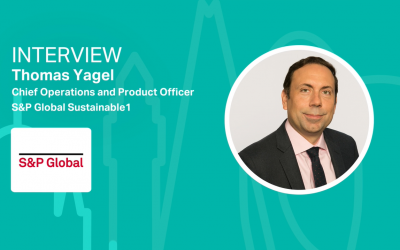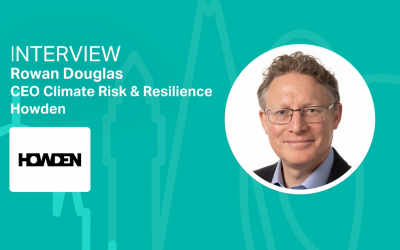Collaboration to scale up circularity: how can your business contribute and benefit?
Six leaders in circular economy innovation came together for a high-level roundtable to discuss collaboration as a strategy for scaling up circularity in the global economy – and to share examples of ecosystem partnerships.

Six leaders in circular economy innovation came together for a high-level roundtable to discuss collaboration as a strategy for scaling up circularity in the global economy – and to share examples of ecosystem partnerships.
What’s driving the increase in circular economy initiatives?
As interest and scrutiny over sustainability accelerates, companies are under increasing pressure to change their business models; ‘doing less bad’ is still seen as ‘doing some bad’ in the global race to secure a net-zero economy and climate-resilient society.
This pressure is driving a shift in priorities towards circularity, which seeks to eliminate waste across the product lifecycle, extend the useful life of materials and design for safe and continuous use of natural resources. Circularity as a guiding principle calls on us to apply a regenerative mindset, to ‘close the loop’ and deliver a net positive impact.
But no loop can truly be closed if companies work in isolation. Entire ecosystems need to be engaged to design collective solutions and to enable the business community to deliver the scale required for positive change.
This was the theme of EY’s high-level roundtable, where participants – under the Chatham House Rule – brought perspectives from multinational consumer goods and retail corporations, suppliers, consumers, orchestrators and influencers. Discussions covered packaging, single-use plastics, regenerative agriculture, taxation, standards for circularity, demand-building coalitions, and pre-competitive mindsets.
1. No one can close the loop alone, but how can we close the loop more quickly?
Every participant agreed that when it comes to circularity, no-one can do it alone.
Obvious areas of collaboration include nascent technologies related to circularity processes, many of which are in development and require collaboration to advance them.
Demand-shaping coalitions are another obvious area of collaboration:
“The only way to get the leverage needed to change whole systems quickly – for example systems related to flexible plastics and single-use plastic bags – is to work together not just as a unified retail sector, but as a unified food and retail sector and in co-operation with large, demand-shaping companies.”
But where does this co-operation end? Can a collaborative mindset reach into competitive environments too? In areas where a wholesale shift is needed, for example a shift from degenerative to regenerative agriculture, co-operation amongst competitors can give everyone a sustainable field to operate in more quickly. Are there opportunities for other industries to follow the lead of regenerative agriculture and exchange more knowledge and insights with competitors?
2. Are you helping to shape the circular economy transition?
Participants are driving circularity in business in diverse ways:
- “We’re not just selling new stuff anymore. We are innovating non-traditional business models to make second-hand products more accessible and integrating rental and sharing economy business models into our core business.”
- “We set up a foundation which gives grants to support broader infrastructure and value chain transformation. This includes working with customer and supplier mindsets and behaviours.”
- “We support client groups in any sector to achieve circularity. Our approach goes through three stages: setting a vision to agree on what circularity looks like for them; using analysis to arrive at a transition pathway, with costs; system change orchestration. Orchestration is a new business skill – it is really the ‘how’ of systems change.”
- “Our investments are largely targeted at connecting the various nodes between seed and consumer. Each node captures data attributes related to cost and quality but currently not much data currently relates to sustainability. We are working to preserve data about sustainability attributes to produce clearer environmental profiles. This can help nudge brands, consumers and retailers towards sustainable options.”
- “We are deploying the power of externalities to scale regenerative agriculture in Europe. Regenerative farmers are increasing biodiversity, storing carbon in soil and increasing soil water storage capacity. But they are not getting paid for these services. We connect farmers to corporations who want to buy regenerative produce, to help channel transition finance into the pockets of the farmers who are practising regenerative farming. Recently a large multinational put $1.4bn into regenerative agriculture.”
- “We make a point of prioritising industry-wide challenges within our own business. We develop technologies around plastic recycling which we license out to other companies.”
3. What’s open source, what’s something we can license, and what’s the crown jewels? How do you decide?
In some industries, like regenerative agriculture, sharing and collaboration occurs even amongst competitors.
“Regenerative agriculture profits from the fact that most people in the movement believe in it and welcome collaboration. We co-operate with all of our competitors and share methodologies, which is rare in other industries. For example, we share insights on how to produce carbon credits from regenerative agriculture. We all believe that this is the way forward and that it will become mainstream. The pie is big enough for all of us and if we all push the change forward together then we all have a field to operate in, in the future. We partner with research institutions to get the data we need to evidence the contribution that regenerative agriculture can make. We also connect farmers with larger corporates that want regenerative food produce and are able to finance the transition for the farmers.”
Another alliance uses profit-sharing as an enabler of collaboration.
“Our group has decided sharing in profits is the best approach as we co-develop products through open innovation, so that we can bring the best talent together for the solution. Once a scalable solution emerges, big companies can create impact by driving it at scale.”
How do we decide if we have a solution that is circular?
“If we all agree on a ‘gold standard’ then we can send useful market signals about what we are aiming for and where innovation is needed. If only one group worked on this, they would bring only one perspective. We need to set standards for the kinds of things we want to buy in the new economy.”
Advocacy is under-deployed as a lever for change.
“If we are really honest about the scale of the change required, we would acknowledge that what is needed – in addition to working groups for product and process innovation and setting standards – is shared advocacy; groups of progressive businesses coming together to advocate for progressive policies to guide us towards a circular and net-zero economy. Businesses can help co-design those with policymakers.”
4. What do you want on the policy and regulation front to help drive the circular economy?
Participants had a wide-ranging wishlist, from those encouraging the carrot of financial incentives, to those advocating taxation and placing more responsibility on businesses to drive circularity.
- “Standardisation – ideally across regions. When different laws come into effect it places a huge reporting burden on companies if all standards and interpretations are different.”
- “Taxation based on externalities – if you create negative effects, you get extra taxes, if you create positive effects and regeneration, you get a tax levy.”
- “Extended producer responsibility.”
- “Incentives and subsidies and less about the stick.”
- “True cost accounting and a framework for the real value of things.”
5. What does ‘good’ look like tomorrow? What’s the world going to look like when it’s circular?
This was not an easy question to answer, but discussion focused on the idea of true circularity stemming from having a different outlook on the world.
- “We have given value to the food we’re eating.”
- “We know we are a part of nature.”
- “Everyone understands the challenges and easy ways to contribute to solutions.”
- “We have abandoned the idea that circularity is just recycling – it’s actually a new way of life that is not about how much stuff we have.”
- “The world is circular by design. We are continuously applying a circular mindset to new challenges.”
6. How do we get to there from here?
Circularity is not going anywhere – it is becoming shorthand for a different way of living and thinking and a new way of doing business.
Moving forward towards a circular global economy is going to require two speeds. The first is orchestration, where bigger and bigger groups move us in the right direction. The second speed is smaller focused action groups working together on the component technical problem statements.
Just 12 years ago, the idea that electric vehicles would replace the internal combustion engine was a distant dream. Today that future is a few years away. We can do the same thing for regenerative agriculture and flexible plastics, and for any other problem where ecosystem collaborations are the key to rapid transformation.
7. What role will consumers play in closing the loop in a global circular economy?
In these early stages – not much. The latest EY Future Consumer Index tracks the sentiment of 20,000 consumers across 20 countries, on issues including sustainability and recycling. The statistics reveal an ‘action and attention gap’ – we don’t do what we say we will and then we don’t even do what we want to do.
But we want to be led.
- 72% of respondents believe companies should drive positive environmental and social outcomes.
- 76% say government should take the lead.
- 61% of us want more easily available information for better sustainable shopping choices.
As consumers, we want companies and governments to make it simple for us to make sustainable choices. The will for circularity is there – as businesses, we just need to find a way.
Find out more about EY’s Sustainability insights for Consumer Products & Retail companies here.






